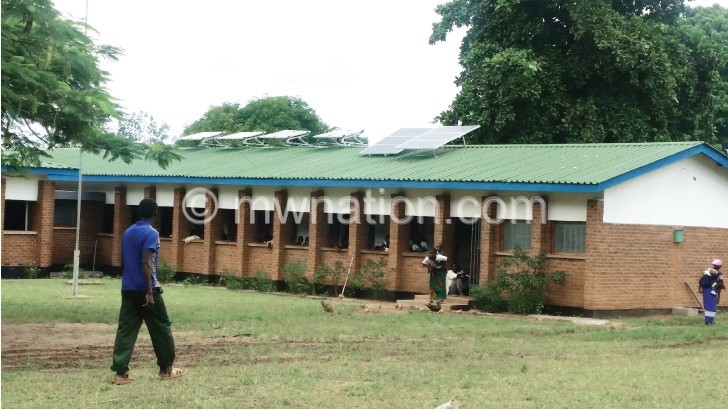Witchcraft claims cripple health centre
June 17 2016, Nicholas Mwenewawo bypasses the neighboring Fulirwa Health Centre in Karonga for Chilumba Rural Hospital.
His choice is surprising though. The rural hospital situated near Chilumba Port is over 25 kilometres away.
Fulirwa Clinic, on the other hand, is just a stone-throw from his Njalayankhunda Village, Traditional Authority Wasambo.
Apart from that, his locality boasts of another clinic owned by the Electricity Supply Corporation of Malawi (Escom) which is generating electricity at Wovwe Power Station.

“It is not by choice,” says Mwenewawo, adding: “Fulirwa Clinic has been operating without a clinician for eight months.”
He says the one available sought for a transfer last year after a sickness he believes was due to witchcraft. Thereafter, no other clinician has been willing to relocate to the rural hard-to-reach area in the south of the district.
“This has forced us to walk long distances for medical attention at Chilumba Rural Hospital,” he says.
Mwenewawo, like several other villagers, opt for the rural public hospital although they walk for five hours. This is because the nearby Wovwe Private Clinic, owned by Escom, is expensive for their pockets.
He says the hospital charges between K2 000 and K5 000, depending on one’s sickness, which he says most locals fail to manage.
Such a scenario at Fulirwa has led to untold miseries. Mwenewawo says he once walked for five hours with his sick child for medical attention at Chilumba Hospital where he was given a bed.
“We suffered a lot after the admission because we did not expect it. We did not have any food or beddings. And it was difficult to send the message back home due to phone network issues,” he explains.
Mwenewawo says the health situation at Fulirwa changed in January this year, though not enough, when a medical assistant, Harry Mwamuwunda, was deployed to fill the vacancy.
Reports indicate that several health workers turned down the offer to work at Fulirwa after the sickness of their colleague.
However, Mwamuwunda was forced by two warning letters to relocate to the rural hospital which also lacks amenities like water, electricity and housing.
“I just had to give in because you can’t fight your bosses,” he says.
Karonga district health officer (DHO) Phinias Mfune says Fulirwa is just one of the several hard-to-reach health centres in the district which are shunned by health workers.
He says most of such facilities are shunned due to issues of transport and lack of water, electricity and housing.
In Malawi, 80 percent of the people live in rural areas while only 30 percent of health workers work in rural facilities.
In addition, 70 percent of health centres in Malawi do not have the minimum two clinical staff necessary to deliver Essential Health Package services and 50 percent do not have minimum nursing staff, states the Malawi Health Sector Strategic Plan for 2011-2016.
Mwamuwunda agrees to such statistics as his clinic has one medical assistant, one nurse and one community midwifery against a catchment area of 17 000 people.
“We are working day and night because the staff is not enough here. We need at least two medical assistants and four nurses. But government is not deploying more staff here,” he says.
Worse still, the hospital has been in dilapidated state for many years since 1976 when it was constructed.
Senior Chief Wasambo says Fulirwa has been neglected by government for many years. He says the hospital’s dilapidated structures ended up becoming a haven for owls and bats; hence, the belief in witchcraft.
“There is no witchcraft here. It’s just a belief because of the nocturnal animals that the hospital used to harbour,” says the chief. In 2004, Malawi’s health system was described as close to collapse due to the chronic shortage of health workers.
Almost a decade later, through the Ministry of Health (MoH), significant momentum has been created in addressing the shortages.
For instance, the implementation of the Emergency Human Resource Plan (EHRP 2004-2010) by the MoH, extended Malawi’s health workforce by 53 percent—from 5 453 health workers in 2004 to 8 369 in 2010, according to the Malawi Health Sector Strategic Plan for 2011-2016.
This highlighted Malawi as a success story in addressing the health workforce shortage. Despite progress made since implementing the EHRP, Malawi is still experiencing a critical shortage of qualified health workers, particularly in rural hard-to-reach areas like Fulirwa where they are most needed.
“The human resource challenges remain both acute and complex and human resource projections show that at current output levels it will take many years to come anywhere near the numbers of health staff needed to provide minimum standards of service delivery,” states the strategic plan.
Plan International Malawi programme area manager Esther Chirwa, whose organisation refurbished Fulirwa Clinic under the Support for Service Delivery Integration (SSDI), says provision of incentive packages like better housing, electricity and water, better management, supervision and transport could be the way forward in retaining workers in rural areas. n





